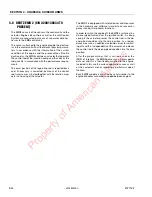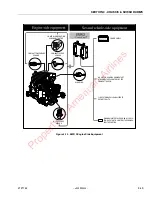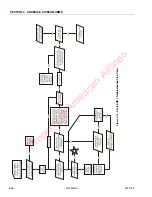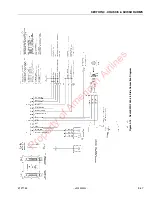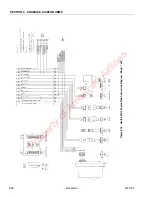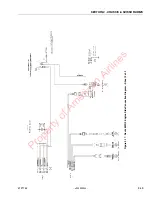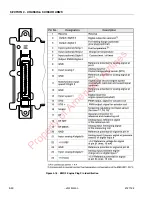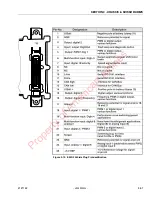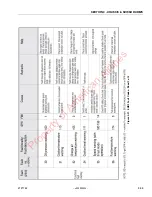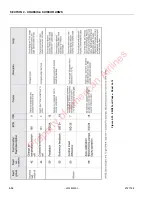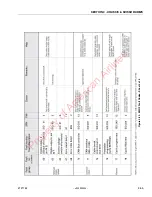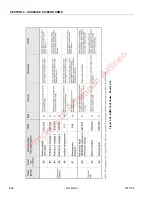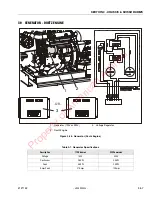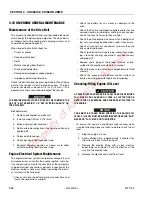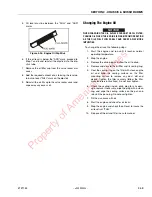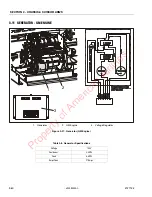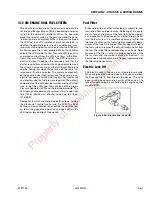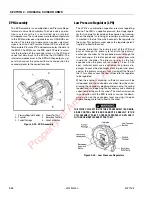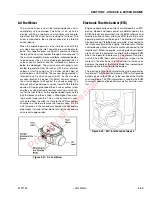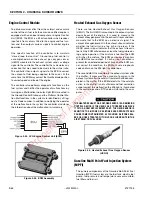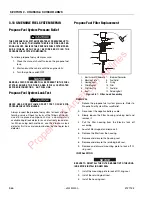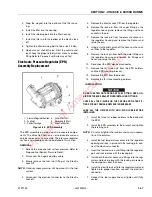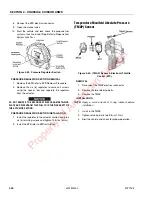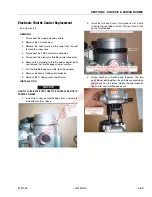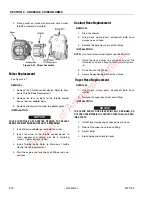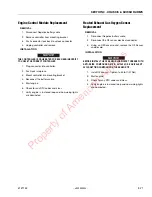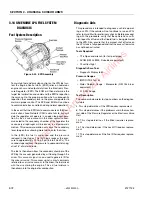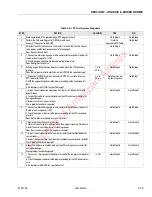
SECTION 3 - CHASSIS & SCISSOR ARMS
3-58
– JLG Sizzor –
3121133
3.10 GM ENGINE GENERAL MAINTENANCE
Maintenance of the Drive Belt
The serpentine drive belt utilizes a spring loaded tensioner
which keeps the belt properly adjusted. The drive belt is
an integral part of the cooling and charging systems and
should be inspected frequently.
When inspecting the belts check for:
• Cracks or breaks
• Chunking of the belt
• Splits
• Material hanging from the belt
• Glazing and hardening
• Damaged or improperly aligned pulleys
• Improperly performing tensioner
Check the belt tensioner by pressing down on the midway
point of the longest stretch between pulleys. The belt
should not depress beyond 1/2 inch (13mm). If the
depression is more than allowable adjust the tension.
NOTICE
THE ENGINE MANUFACTURER DOES NOT RECOMMEND THE
USE OF "BELT DRESSING" OR "ANTI SLIPPING AGENTS" ON
THE DRIVE BELT.
Belt Adjustment:
1.
Remove existing belt and discard.
2.
Install new belt (21mm X 1187mm).
3.
Unload spring in belt tensioner.
4.
Return alternator adjustment to original position and
tighten bolt.
5.
Release belt tensioner.
6.
Check position of belt tensioner stop.
7.
Readjust alternator position as necessary to allow
correct positon of belt tensioner stop.
Engine Electrical System Maintenance
The engine electrical system incorporates computers and
microprocessors to control the engine ignition, fuel con-
trol, and emissions. Due to the sensitivity of the computers
to good electrical connections periodic inspection of the
electrical wiring is necessary. When inspecting the electri-
cal system use the following:
• Check and clean the battery terminal connections and
insure the connections are tight
• Check the battery for any cracks or damage to the
case
• Check the Positive and Negative battery cables for any
corrosion build up, rubbing or chafing, check connec-
tion on the chassis to insure they are tight
• Check the entire engine wire harness for rubbing chaf-
ing, cuts or damaged connections, repair if necessary
• Check all wire harness connectors to insure they are
fully seated and locked
• Check ignition coil and spark plug cables for harden-
ing, cracking, chafing, separation, split boot covers
and proper fit
• Replace spark plugs at the proper intervals as pre-
scribed in the engine manufacturer’s manual
• Check to make sure all electrical components are fitted
securely
• Check the ground and platform control stations to
insure all warning indicator lights are functioning
Checking/Filling Engine Oil Level
AN OVERFILLED CRANKCASE (OIL LEVEL OVER THE SPECIFIED
FULL MARK) CAN CAUSE AN OIL LEAK, A FLUCTUATION OR
DROP IN THE OIL PRESSURE, AND ROCKER ARM "CLATTER" IN
THE ENGINE.
NOTICE
CARE MUST BE TAKEN WHEN CHECKING THE ENGINE OIL
LEVEL. OIL LEVEL MUST BE MAINTAINED BETWEEN THE "ADD"
MARK AND "FULL" MARK ON THE DIPSTICK.
To ensure that you are not getting a false reading, make
sure the following steps are taken to before check the oil
level.
1.
Stop the engine if in use.
2.
Allow sufficient time (approximately 5 minutes) for
the oil to drain back into the oil pan.
3.
Remove the dipstick. Wipe with a clean cloth or
paper towel and reinstall. Push the dipstick all the
way into the dipstick tube.
4.
Remove the dipstick and note the oil level.
Property of American Airlines

